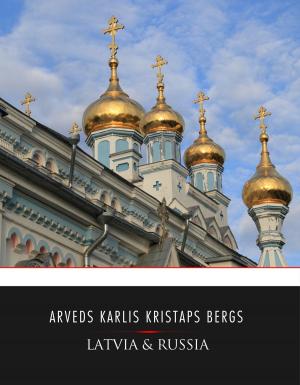Ch'ing-Tsing Nestorian Tablet: Eulogizing the Propagation of the Illustrious Religion in China
Nonfiction, History, Asian, China, Religion & Spirituality, Christianity, Church, Church History, Ancient History| Author: | Charles Horne | ISBN: | 9781619826687 |
| Publisher: | Charles River Editors | Publication: | February 3, 2012 |
| Imprint: | Language: | English |
| Author: | Charles Horne |
| ISBN: | 9781619826687 |
| Publisher: | Charles River Editors |
| Publication: | February 3, 2012 |
| Imprint: | |
| Language: | English |
Charles Horne wrote this essay about the Nestorian Tablet, a 10 foot tall medieval Christian relic in China that shows Christianity flourished in medieval China. Carven dragons and a cross adorn its summit, and its main shaft is completely covered with some two thousand Chinese characters. It stands now in the Peilin or "Forest of Tablets" in Sian-fu, this Peilin being a great hall specially devoted to the preservation of old historic tablets. Up to a few years ago the ancient stone stood with other unvalued monuments in the grounds of a Buddhist monastery, exposed to all the assault of the elements. Only European urgence has led to its being preserved in the Peilin. The Nestorian sect of Christians still exists in Western Asia and was in a thriving condition in Syria in the sixth century. It sent missionaries widely over Asia. Marco Polo recorded having found Christian churches in China; and Roman Catholic missionaries of later centuries found there a few Nestorians still practising a debased formof their half-forgotten faith. This much concerning the Nestorian Christianity in China we have long known. Then, with the modern opening of the empire, the old Nestorian stone was found. It tells its own history, and tells it plainly, how the Nestorian monks came, how Chinese officials were appointed to listen to their explanations, and gravely approved of the new religion as having "excellent principles." Various emperors accepted, or at least included, Christianity among their religions; and the faith prospered, and had many thousands of followers, and in the year A.D. 781 erected this stone in commemoration of its triumphs.
Charles Horne wrote this essay about the Nestorian Tablet, a 10 foot tall medieval Christian relic in China that shows Christianity flourished in medieval China. Carven dragons and a cross adorn its summit, and its main shaft is completely covered with some two thousand Chinese characters. It stands now in the Peilin or "Forest of Tablets" in Sian-fu, this Peilin being a great hall specially devoted to the preservation of old historic tablets. Up to a few years ago the ancient stone stood with other unvalued monuments in the grounds of a Buddhist monastery, exposed to all the assault of the elements. Only European urgence has led to its being preserved in the Peilin. The Nestorian sect of Christians still exists in Western Asia and was in a thriving condition in Syria in the sixth century. It sent missionaries widely over Asia. Marco Polo recorded having found Christian churches in China; and Roman Catholic missionaries of later centuries found there a few Nestorians still practising a debased formof their half-forgotten faith. This much concerning the Nestorian Christianity in China we have long known. Then, with the modern opening of the empire, the old Nestorian stone was found. It tells its own history, and tells it plainly, how the Nestorian monks came, how Chinese officials were appointed to listen to their explanations, and gravely approved of the new religion as having "excellent principles." Various emperors accepted, or at least included, Christianity among their religions; and the faith prospered, and had many thousands of followers, and in the year A.D. 781 erected this stone in commemoration of its triumphs.















